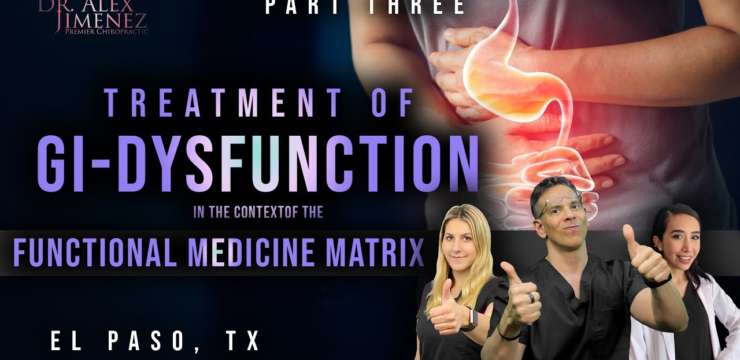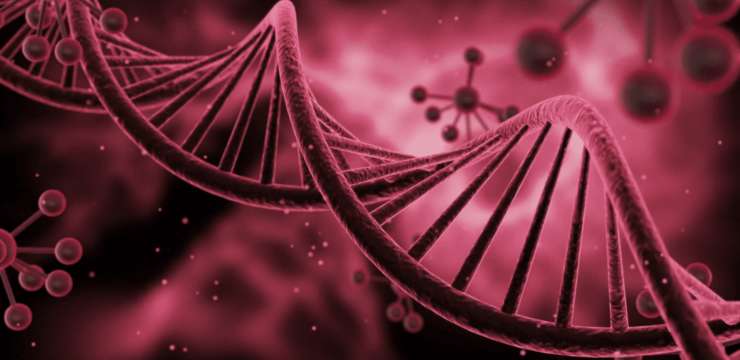
The term allostatic load refers to any type of stress occurring in the body for long periods of time. Types of stress we encounter daily from environmental stress or psychological stress have the ability to alter the way our body operates. Stress is directly linked to causing inflammation. Inflammation throughout the body leads to insulin resistance, leaky gut, rheumatoid arthritis, and essentially all chronic diseases.Â
Stressors
When patients come to us with symptoms, they present with a collection of signs. Although these signs and symptoms may have started to present themselves in the last few months, the inflammation and allostatic load have been building up inside their bodies for years. There are deep interconnections throughout the entire body, no one system operates alone. This is to be heavily considered when creating a treatment plan for someone with a heavy allostatic load. One of the reasons inflammation gets so bad is because when a stressor is present in the body, the body has to respond. The body does not ignore these stressors and when there becomes a surplus the body is constantly firing, eventually leading up to autoimmune diseases.Â
There is no one stressor that is more important than the other. These stressors impact individuals differently thus creating an equal allostatic load. Stressors include:
- Trauma/mechanicalÂ
- Infection
- ToxicologyÂ
- Nutrient ImbalanceÂ
- NeurologyÂ
- ElectromagneticÂ
- EpigeneticsÂ
When these stressors are present and coupled with genetic polymorphisms or epigenetics we see chronic issues arise. There is no one chronic issue that is caused by a specific trigger, but rather how your genes are being expressed to the trigger presented. More commonly, the chronic health conditions we see from stressors and epigenetics are IBS, Fatigue, Leaky Gut, Pain, Weight, Thyroid, Inflammation, Autoimmune, Depression, and Insulin Resistance.
We see now that genetic expression is connected to environmental factors. Our genes are constantly expressing and the ability of them to express and thrive depends on the environment we surround them with. By surrounds the genes with foods that specifically code anti-inflammatory markers, you will see a reduction of inflammation by making necessary dietary changes. We use a test by DNA Life called DNA Diet to assess the genes you have and what diets will aid your genes in anti-inflammatory expression, ultimately lowering your risk of overall disease. An example is shown below:Â Â
Another highly important marker we look at is the neurology side of the allostatic load. The nervous system is more than signals from the spine to the brain. Rather, the nervous system is incorporated into almost every other body system. Additionally, neurotransmitters are responsible for establishing mood with the production of serotonin. Serotonin is primarily housed in the gastrointestinal tract, relating back to the importance of surrounding our genes with proper nutrients for optimal functioning. There is a close inner-relationship between the nervous system, gene expression, and overall disease risk. Macronutrients are the proteins, fats, and carbohydrates we feed our bodies. With a nutrient imbalance, we see a significant break down of protein. This increases enzymes and in response, the body does not create as much serotonin or melatonin. Thus, leading to less relaxation, more stress felt by the nervous system, and inflammatory cytokines being produced. A test we use to measure neurotransmitters is from Labrix. A sample is shown below:
Using chiropractic care along with all-natural treatment plans will reduce the allostatic load in ones body. Chiropractic works by adjusting the joints to ensure smooth fluidity. With the joints sitting in line where they need to be there is a reduction of pressure on both nerves and muscles, allowing the nervous system to reset and become in sync with itself again. By regular adjustments, feeing the genes properly, working with a practitioner to determine your allostatic stress load and practicing other relaxation techniques, inflammation levels will decrease.Â
Inflammation has been proven time and time again to be heavily associated with nutrition and chronic illness. We need to help others understand that everything we feel and how we express our genes impacts our future greatly. By feeding not only ourselves but our children healthy organic foods we are decreasing inflammation and reducing everyone’s risk for developing a chronic disease. A good trick I use is to only shop the outside lining of the grocery store and avoid aisles! Most of the pre-packaged chemical foods are within the aisles of the stores, but if you stick to the outside, you’ll find mostly organic fresh produce and grass-fed meats to create healthy meals and snacks from. -Kenna Vaughn, Senior Health CoachÂ
References:Â
Moss, Jeffrey. “Demystifying Chronic Illness: Allostatic Load as a Unified Model of Chronic Illness.†Functional Medicine University. 2020, www. Functionalmedicineuniversity. com/members/1042.cfm.
The scope of our information is limited to chiropractic, musculoskeletal, and nervous health issues or functional medicine articles, topics, and discussions. We use functional health protocols to treat injuries or disorders of the musculoskeletal system. Our office has made a reasonable attempt to provide supportive citations and has identified the relevant research study or studies supporting our posts. We also make copies of supporting research studies available to the board and or the public upon request. To further discuss the subject matter above, please feel free to ask Dr. Alex Jimenez or contact us at 915-850-0900. Â
Disclaimers
Professional Scope of Practice *
The information herein on "Epigenetics: Stress In Relation To Chronic Disease" is not intended to replace a one-on-one relationship with a qualified health care professional or licensed physician and is not medical advice. We encourage you to make healthcare decisions based on your research and partnership with a qualified healthcare professional.
Blog Information & Scope Discussions
Welcome to El Paso's wellness blog, where Dr. Alex Jimenez, DC, FNP-C, a board-certified Family Practice Nurse Practitioner (FNP-C) and Chiropractor (DC), presents insights on how our team is dedicated to holistic healing and personalized care. Our practice aligns with evidence-based treatment protocols inspired by integrative medicine principles, similar to those found on dralexjimenez.com, focusing on restoring health naturally for patients of all ages.
Our areas of chiropractic practice include Wellness & Nutrition, Chronic Pain, Personal Injury, Auto Accident Care, Work Injuries, Back Injury, Low Back Pain, Neck Pain, Migraine Headaches, Sports Injuries, Severe Sciatica, Scoliosis, Complex Herniated Discs, Fibromyalgia, Chronic Pain, Complex Injuries, Stress Management, Functional Medicine Treatments, and in-scope care protocols.
Our information scope is limited to chiropractic, musculoskeletal, physical medicine, wellness, contributing etiological viscerosomatic disturbances within clinical presentations, associated somato-visceral reflex clinical dynamics, subluxation complexes, sensitive health issues, and functional medicine articles, topics, and discussions.
We provide and present clinical collaboration with specialists from various disciplines. Each specialist is governed by their professional scope of practice and their jurisdiction of licensure. We use functional health & wellness protocols to treat and support care for the injuries or disorders of the musculoskeletal system.
Our videos, posts, topics, subjects, and insights cover clinical matters, issues, and topics that relate to and directly or indirectly support our clinical scope of practice.*
Our office has reasonably attempted to provide supportive citations and has identified the relevant research studies or studies supporting our posts. We provide copies of supporting research studies available to regulatory boards and the public upon request.
We understand that we cover matters that require an additional explanation of how they may assist in a particular care plan or treatment protocol; therefore, to discuss the subject matter above further, please feel free to ask Dr. Alex Jimenez, DC, APRN, FNP-BC, or contact us at 915-850-0900.
We are here to help you and your family.
Blessings
Dr. Alex Jimenez DC, MSACP, APRN, FNP-BC*, CCST, IFMCP, CFMP, ATN
email: coach@elpasofunctionalmedicine.com
Licensed as a Doctor of Chiropractic (DC) in Texas & New Mexico*
Texas DC License # TX5807
New Mexico DC License # NM-DC2182
Licensed as a Registered Nurse (RN*) in Texas & Multistate
Texas RN License # 1191402
ANCC FNP-BC: Board Certified Nurse Practitioner*
Compact Status: Multi-State License: Authorized to Practice in 40 States*
Graduate with Honors: ICHS: MSN-FNP (Family Nurse Practitioner Program)
Degree Granted. Master's in Family Practice MSN Diploma (Cum Laude)
Dr. Alex Jimenez, DC, APRN, FNP-BC*, CFMP, IFMCP, ATN, CCST
My Digital Business Card






